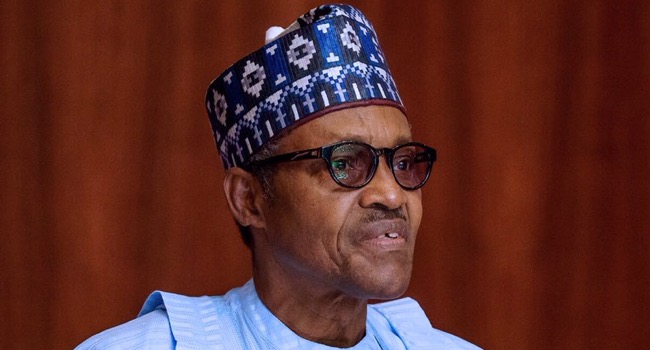Business
BUSINESS REVIEW: Nigeria’s 2020 debt servicing cost in safe zone but economy risks stagnation. Here’s why

There has been a lot of uproar from Nigerians about the amount budgeted for debt servicing (N2.75 trillion), recurrent(N4.88 trillion), and capital expenditure (N2.14 trillion) in the 2020 proposed budget presented to the National Assembly for passage by President Muhammadu Buhari.
While there are no clear cut and dry number or percentage parameters, there is still a need to evaluate if said budget is sustainable.
Nigeria’s debt to GDP ratio in 2018 was 16.1%, which is still in safe thresholds. Gross Domestic Product (GDP) for full year 2018 was $397.2 billion and external and internal debts as at then were $79 billion and N24 trillion.
A study by the World Bank titled ‘Finding the Tipping Point—When Sovereign Debt Turns Bad’, found that if the debt-to-GDP ratio exceeds 77% for an extended period, it slows economic growth. Every percentage point of debt above this level costs the country 1.7% in economic growth.
It’s even worse for emerging markets – like Egypt, Iran, Nigeria, Pakistan, Russia, Saudi Arabia, Taiwan, and Thailand – each additional percentage point of debt above 64% will slow growth by 2% each year.
Though Nigeria’s debt to GDP ratio have been on the save threshold as far back as 2007. In 2007 it was 7.6%, for 2008 – 7.2%, 2009 – 8.9%, 2010 – 9.6%, 2011 – 10.4%, 2012 – 10.5%, 2013 – 10.6%, 2014 – 10.7%, the rise began to steep in 2015 with 11.6%, 2016 – 14.3%, 2017 – 16.2%, and in 2018 16.1%.
Servicing debt is unproductive and siphons resources away from potentially productive endeavours. If the debt was incurred on productive investments with a higher rate of return than the interest rate of the debt, this may not be a bad thing.
However, there is a consensus about having the amount budgeted by a country for debt servicing to be less than capital expenditure. This practice attracts investors and even make government bonds market attractive.
Recurrent expenditure
Recurrent expenditure – which includes salaries, pension and gratuities, and overhead cost – is expected to amount to 47% of the total budget. This is inclusive of the new minimum wage structure, according to the government.
What is puzzling is the fact that for a government that is currently having dwindling revenue due to global drop in oil price, recurrent spending is still skyrocketing. Between 2018 and 2019 recurrent expenditure grew by 15.6% and is expected to hit 39.7% in 2020.
Nigeria Government is currently testing the waters on other means of generating revenue. The 2020 budget aside from oil revenue is predicated on increase in Value Added Tax (VAT) from 5% to 7.5%. The Central Bank of Nigeria’s (CBN) recent introduction of Cashless Policy, on the other hand, will see individuals pay 3% and 2% for withdrawal and cash lodgement, while corporates will pay 5% and 3% for withdrawal and cash lodgement for transactions above N500,000 (individual) and N3 million (corporate).
At the end, a great chunk of the revenue from these means are sunk into running the government instead of capital spending that will attract investors and gain the trust of tax payers.
Capital spend
2020 capital spending as proposed by the government is N2.14 trillion, which a disparity of N2.7 trillion when compared to the recurrent expenditure. A disparity that does not do anyone good.
President Buhari said, though, the capital expenditure was to complete ongoing projects and assured Ministries, Departments, and Agencies (MDAs) were not allowed to add new projects.
Capital spending for Health and Education combine is no where near what is budgeted for the National Assembly. The health sector is expected to get N46 billion and education N48 billion, yet the National Assembly will receive a statutory allocation of N125 billion.
Read also: BUSINESS REVIEW: Here’s why Nigeria’s 2020 budget is not only pitiable but a disaster in waiting
As at August 2019, the National University Commission (NUC) put the total number of students in tertiary institution for 2017 at 1.9 million. This is not inclusive of primary and secondary school pupils.
This kind of expenditure brings closer to Wilson Erumebor’s prediction. He is an Economist and Research Analyst at Agusto & Co. Erumebor had said on the sidelines of the recently concluded 25th edition of the Nigeria Economic Summit organised by the Nigeria Economic Summit Group (NESG) that Nigeria could stagnate, with average GDP growth of 3.3% from 2020 to 2050. He said unemployment and poverty rates will be at 49% and 58% respectively.
He also said Nigeria could enter recession by 2021, with 70% unemployment rate and 80% of the Nigerian population living in poverty.
Join the conversation
Support Ripples Nigeria, hold up solutions journalism
Balanced, fearless journalism driven by data comes at huge financial costs.
As a media platform, we hold leadership accountable and will not trade the right to press freedom and free speech for a piece of cake.
If you like what we do, and are ready to uphold solutions journalism, kindly donate to the Ripples Nigeria cause.
Your support would help to ensure that citizens and institutions continue to have free access to credible and reliable information for societal development.






















